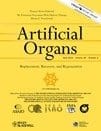
Using the body’s cells and letting the body itself do most of the work
Andemariam Beyene sat by the hospital window, the low Arctic sun on his face, and talked about the time he thought he would die.
Two and a half years ago doctors in Iceland, where Mr. Beyene was studying to be an engineer, discovered a golf-ball-size tumor growing into his windpipe. Despite surgery and radiation, it kept growing. In the spring of 2011, when Mr. Beyene came to Sweden to see another doctor, he was practically out of options. “I was almost dead,” he said. “There was suffering. A lot of suffering.”
But the doctor, Paolo Macchiarini, at the Karolinska Institute here, had a radical idea. He wanted to make Mr. Beyene a new windpipe, out of plastic and his own cells.
Implanting such a “bioartificial” organ would be a first-of-its-kind procedure for the field of regenerative medicine, which for decades has been promising a future of ready-made replacement organs — livers, kidneys, even hearts — built in the laboratory.
For the most part that future has remained a science-fiction fantasy. Now, however, researchers like Dr. Macchiarini are building organs with a different approach, using the body’s cells and letting the body itself do most of the work.
“The human body is so beautiful, I’m convinced we must use it in the most proper way,” said Dr. Macchiarini, a surgeon who runs a laboratory that is a leader in the field, also called tissue engineering.
So far, only a few organs have been made and transplanted, and they are relatively simple, hollow ones — like bladders and Mr. Beyene’s windpipe, which was implanted in June 2011. But scientists around the world are using similar techniques with the goal of building more complex organs. At Wake Forest University in North Carolina, for example, where the bladders were developed, researchers are working on kidneys, livers and more. Labs in China and the Netherlands are among many working on blood vessels.
The work of these new body builders is far different from the efforts that produced artificial hearts decades ago. Those devices, which are still used temporarily by some patients awaiting transplants, are sophisticated machines, but in the end they are only that: machines.
Tissue engineersaim to produce something that is more human. They want to make organs with the cells, blood vessels and nerves to become a living, functioning part of the body. Some, like Dr. Macchiarini, want to go even further — to harness the body’s repair mech
anisms so that it can remake a damaged organ on its own.
via New York Times – The Latest Streaming News: Tissue engineering updated minute-by-minute
Bookmark this page and come back often
Latest NEWS
Latest VIDEO








